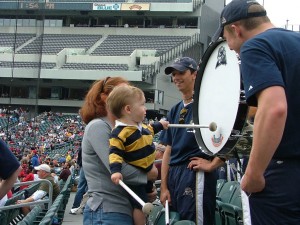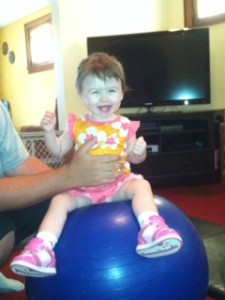7 Ways to Create a Learning Experience for Your Toddler in the Kitchen
February 8, 2017March Family Friendly Community Events
March 3, 2017It’s no secret that little kids love music. Many babies and toddlers naturally move to music and rhythms and even begin to imitate gestures to simple songs such as “Itsy Bitsy Spider” well before they learn to talk. You may have even sung to or played music for your baby while she was still in the womb.
Why Is Music Important?

Music can help your child with not only language and listening skills, but also motor, social and cognitive skills. Most children will naturally begin to sway, bounce, jump, clap or stomp their feet to the beat of music. It doesn’t matter if you listen to music on TV, You Tube videos on your phone, cds, radio in the car or whether you just sing and dance with your kids at home-just do it!
Music and Language
Music can teach gestural imitation skills to young children who are not yet verbal or to older children who may still be non-verbal. For example, singing a song like “Wheels on the Bus” includes many gestures, as well as repetition of many words “The horn on the bus goes beep, beep, beep”. As therapists we recommend that parents use songs such as this to aid in their child’s gestural imitation and language development. Children must first learn to communicate via gestures and in non-verbal ways (pointing to something to gain attention) before they will truly use meaningful verbal communication. With a song such as Wheels on the Bus, you can first concentrate on gestural imitation and then as your child becomes more familiar with the song, you can start to pause during repetitious choruses to see if your child will make a verbal attempt to fill in the blank. For example, “The baby on the bus goes “wah, wah,___”. Did your child make a “w” sound when you paused? Great! If not, keep singing and fill in the blank for her.

Bouncing young kids on a big ball, such as an exercise ball to the beat of music can elicit sounds and encourage babbling. You can play fun games such as bouncing and starting with babbling sounds your child already makes, such as “da, da, da” and then move onto new sounds such as “do, do, do” or “pa, pa, pa” and see if your child makes attempts to repeat new sounds. Babble one or two sound combinations to the tune of the Alphabet Song.
Children also respond well to directions sung to them rather than spoken to them. This works on their receptive language skills. Plus it makes tasks more fun, and sometimes children will comply more willingly. Remember the Clean Up Song from the Barney show, “Clean up, clean up everybody everywhere…”? If not, make up your own songs, and trust me your kids do not care if you can’t carry a tune very well. Maybe when you were in preschool the teacher used “This is the way we wash our hands, wash our hands, wash our hands…” or used quiet songs at nap time to get everyone to settle down. Again, we have repetition of words, which encourages language learning and sometimes the music/singing will catch a child’s attention, as opposed to the spoken words because music is processed in a different part of the brain than spoken language. There are some fascinating studies out there showing that some children with autism could follow directions when sung to them, but not when spoken to them. There are also studies related to elderly patients who were thought to be too compromised by dementia to respond, but when played a song they knew via headphones suddenly they reacted or sang along.

Musical instruments such as drums, pianos, shakers, tambourines, guitars, whistles, castanets & bells all make great gifts for young kids. But, you don’t have to go with store bought instruments, there are plenty of ideas on the web and Pinterest for instruments you can make at home. Just be sure to supervise homemade instruments if they contain small parts which could be choking hazards.
Now get out there and start singing, dancing and playing music with your kids!

 Send to a friend!
Send to a friend!